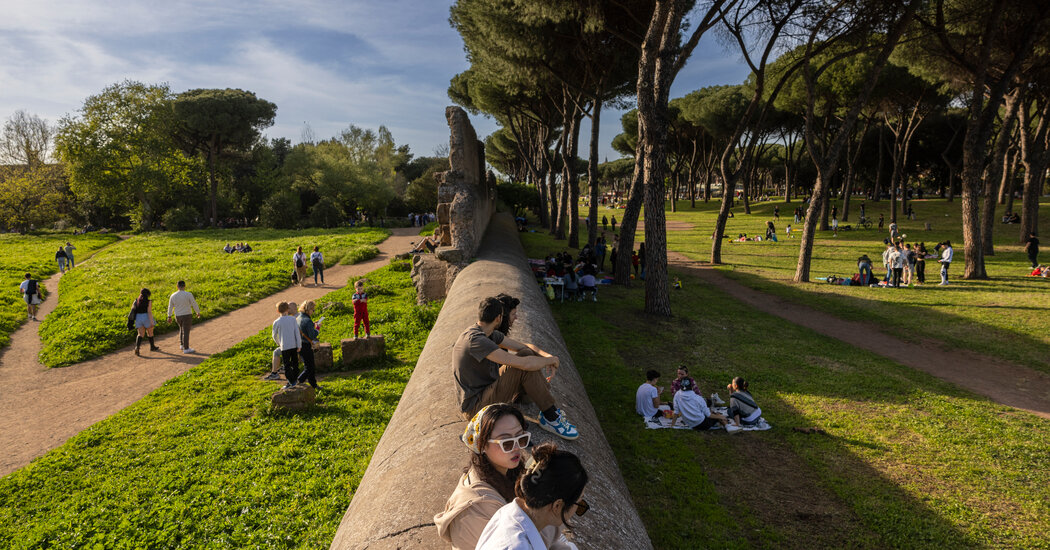The stone arches looped solemnly over their shadows, some teetering above the grass, some sinking into it. It was a dazzling January morning, and I was standing in the Park of the Aqueducts, about 20 minutes by metro from central Rome. Here, the ruined arcades of six of the 11 aqueducts that once supplied the Eternal City with an astonishing volume of water — by some counts double the per capita water allotment of a typical 21st-century American city — have been preserved.
My aim was to trace the course of one of them: the Aqua Marcia, built between 144 and 140 B.C. by Julius Caesar’s ancestor Quintus Marcius Rex.
Hailed by Pliny the Elder as “the most famous of all waters in the world for coldness and wholesomeness,” the Marcia was also the longest of the capital’s ancient aqueducts, running some 56.8 miles from source to city. Only about 6.2 miles stood above ground.
I had always assumed that Rome’s aqueducts were a kind of aerial plumbing, their water channeled atop arches. But the Marcia, like all classical aqueducts, ran largely underground. The water moved by the force of gravity, and arches and bridges, which were expensive and vulnerable to attack, were only used to span ravines, valleys and other dips in the terrain that would have interrupted the flow.
The arcade of the Marcia is now dry, but the same water still feeds mountain springs east of the capital. And though it now travels through a modern network of tunnels and tubes, the water is still referred to by its ancient name and is still considered Rome’s best drinking water.
One of the series of arches that rose before me once carried this current to Rome. But which one?
In the Park of the Aqueducts
The roughly 600-acre Park of the Aqueducts has few signs, maps or directions. Romans come here to jog and walk their dogs. The few tourists wander through a bucolic landscape — green, tranquil, its imposing ruins seemingly untouched by modernity — that has appeared in such iconic Italian films as “La Dolce Vita” and “La Grande Bellezza.”
Michele Alfonsi, a lawyer who heads up Pons Iani, a volunteer group devoted to aqueducts, offered to guide me. “See that?” he asked, pointing to a stone passageway atop massive arches. “That’s the specus of the Aqua Marcia.”
Specus is the Latin term for a roofed channel built at a slight downward slope so that water would run through it without gushing or puddling. This one was nearly high enough to stand up inside.
We clambered up…
Click Here to Read the Full Original Article at NYT > Travel…
